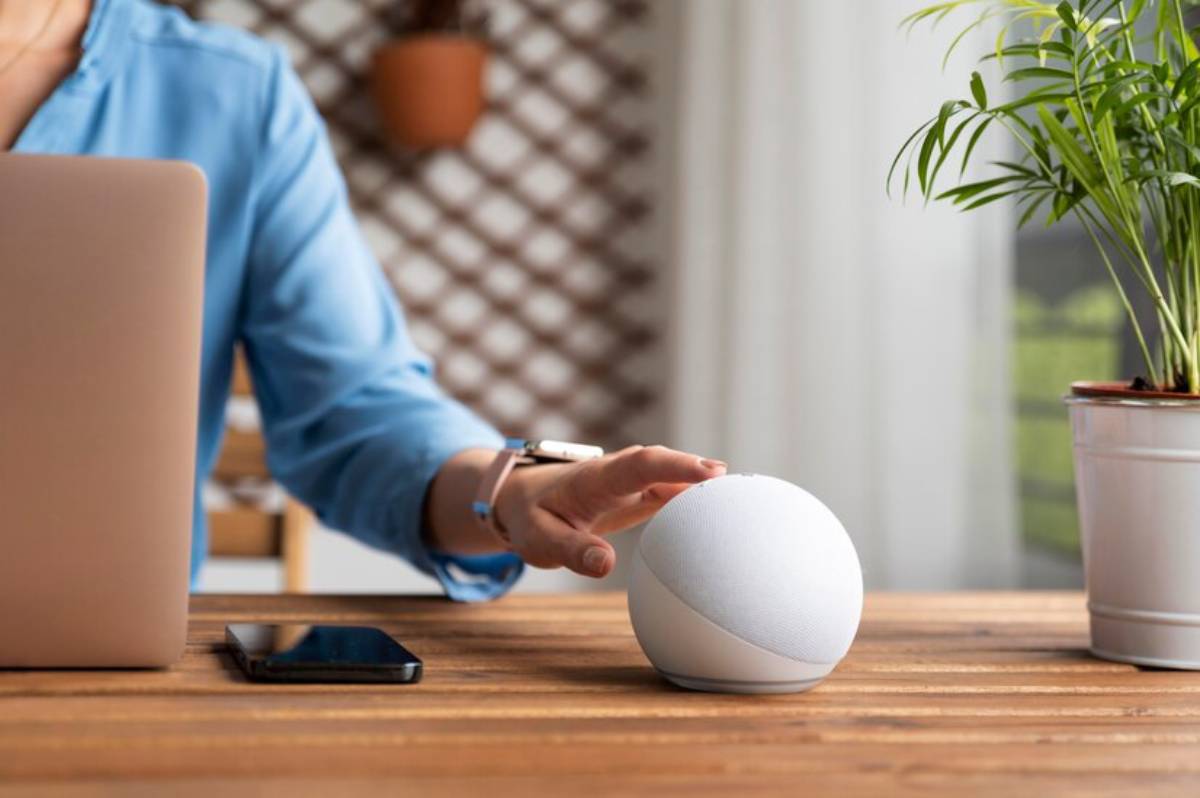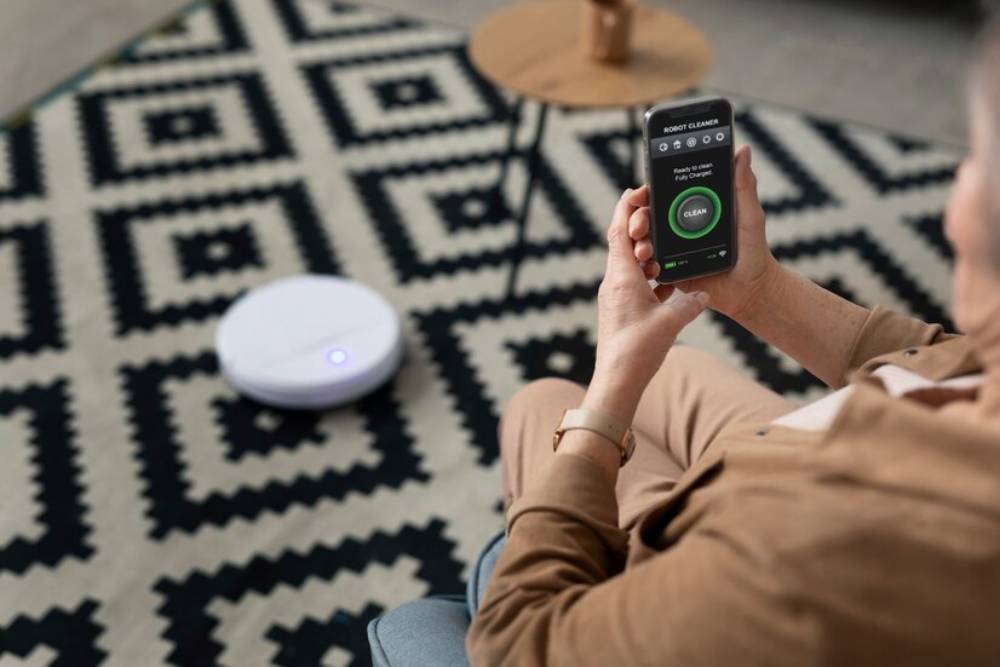
AI Assistants in the Smart Home Ecosystem
Picture coming home after a long day. The lights dim to your favourite brightness. Your favourite playlist begins to play, and the thermostat sets to the perfect temperature—all by itself. This is no longer the realm of science fiction. AI assistants in smart homes are making personalised experiences a daily reality.
Artificial Intelligence (AI) is transforming the way we interact with our homes. Smart homes rely on intelligent assistants. They manage voice-controlled lighting, security, AI shopping, and entertainment. These technologies are evolving. They promise more efficiency, convenience, and even companionship. This will reshape domestic life as we know it.
In this article, we look at how AI assistants are becoming common in smart homes. We’ll discuss how they work, their benefits, and challenges. Lastly, we’ll consider what the future might bring for this exciting ecosystem.
What Is a Smart Home Ecosystem?

A smart home ecosystem is a network of connected devices. This includes lighting, heating, appliances, and security. You can monitor, manage, and automate these systems from afar. These devices usually connect using Wi-Fi, Bluetooth, or special protocols like Zigbee and Z-Wave.
The core of this ecosystem is the AI assistant. It’s a virtual helper that uses machine learning and natural language processing. It can understand and respond to voice commands or inputs from apps.
Who Are the Major Players?

Some of the most popular AI assistants in the smart home ecosystem include:
- Amazon Alexa – A widely used assistant that integrates with thousands of smart home products.
- Google Assistant – Known for its conversational AI and powerful search integration.
- Apple Siri – A privacy-focused assistant compatible with HomeKit-enabled devices.
- Samsung Bixby, Microsoft Cortana, and others – Emerging or niche options with specific integrations.
Each platform has its own features, but they all aim to simplify and improve how we engage with our living spaces.
Core Functions of AI Assistants in Smart Homes
1. Voice Control and Automation

AI assistants enable hands-free control of smart home devices:
- Turn lights on and off
- Adjust thermostats
- Play music or podcasts
- Set reminders and alarms
Voice interaction helps people with mobility issues. It makes homes easier to use and more accessible.
2. Personalised Scheduling
Based on user preferences and routines, AI assistants can automate tasks:
- Opening blinds at sunrise
- Locking doors at bedtime
- Adjusting room temperatures before arrival
These smart behaviours change over time. They get better with ongoing learning and usage data.
3. Home Security and Surveillance
AI assistants work with smart security systems to:
- Monitor cameras
- Detect unusual activity
- Send real-time alerts
- Lock and unlock doors remotely
Some systems use facial recognition or geofencing. They identify household members and respond based on that.
4. Energy Management
AI assistants can track energy use and adjust settings on their own. This helps cut waste and lower utility bills.
- Turning off unused appliances
- Regulating heating and cooling
- Suggesting more energy-efficient habits
Integration with smart meters and solar panels adds further optimisation for eco-conscious households.
Integration with Other Devices and Platforms
An AI assistant gets much stronger when it connects to many devices and services. Examples include:
- Smart lights (Philips Hue, LIFX)
- Smart thermostats (Nest, ecobee)
- Smart locks (August, Yale)
- Home hubs and sensors (Samsung SmartThings, Aqara)
- Entertainment systems (Sonos, Fire TV, Apple TV)
Cross-platform compatibility is crucial. Platforms like IFTTT (If This Then That) let users create custom automations. These automations connect different brands or ecosystems.
Benefits of AI Assistants in the Smart Home Ecosystem
1. Convenience and Comfort
Now you can control your home using voice or app commands. This means no more searching for remotes, adjusting dials, or rushing to change the thermostat. AI assistants simplify everyday tasks.
2. Accessibility
Voice-controlled systems help elderly people and those with disabilities. They offer more independence and are easier to use. Simple requests—like turning on the lights—can be achieved without physical effort.
3. Time and Energy Savings
Automated routines save time on repetitive tasks. Energy-efficient settings cut bills and help the environment.
4. Enhanced Security
AI cameras, locks, and motion sensors boost home safety. They also provide peace of mind for homeowners, whether they’re upstairs or away.
5. Customisation and Learning
AI assistants learn from user behaviour, enabling more accurate predictions and recommendations over time. This makes the smart home truly ‘smart’, responding to your lifestyle with minimal input.
Challenges and Considerations
1. Privacy and Data Security
AI assistants collect and process large volumes of personal data. Concerns include:
- Recording of conversations
- Data storage practices
- Potential for hacking or unauthorised access
Choose devices from reputable manufacturers and ensure robust privacy settings, two-factor authentication, and regular software updates.
2. Device Compatibility
Not all smart home devices are universally compatible. Before purchasing, ensure that your chosen products can communicate with your preferred AI assistant.
3. Internet Dependency
Most AI assistants require a stable internet connection. Outages can disrupt functionality, highlighting the need for local controls or backups.
4. Learning Curve
Setting up automations and routines can be daunting for first-time users. Manufacturers are working to improve user interfaces, but initial configuration may still require technical know-how.
Future Trends: Where Are We Headed?
1. Greater Interconnectivity
With the adoption of Matter—a new industry-wide protocol—future smart home devices will be easier to integrate across platforms. This will reduce compatibility headaches and streamline the user experience.
2. Contextual and Emotional Intelligence
AI assistants will move beyond basic commands, recognising tone, sentiment, and contextual cues. For example, saying “I’m cold” might trigger the assistant to increase the heating automatically.
3. Smarter Energy Management
AI will play a bigger role in sustainable living—managing smart grids, charging electric vehicles off-peak, and optimising appliance use based on solar energy availability.
4. AI Companionship and Care
As AI becomes more conversational, assistants may evolve into companions—especially for isolated individuals—offering reminders, emotional support, and even social interaction.
5. Improved Voice Recognition
Next-gen AI will distinguish between household members with better accuracy, tailoring responses and access permissions accordingly.
Getting Started with an AI-Powered Smart Home
Thinking of building your own smart home ecosystem? Here’s how to begin:
Step 1: Choose Your AI Assistant
Decide whether you’ll use Alexa, Google Assistant, Siri, or another platform based on your existing devices and privacy preferences.
Step 2: Start Small
Begin with a few core components—smart lights, plugs, or a thermostat—and build gradually as you gain confidence.
Step 3: Explore Routines
Set up simple automations, such as “Good Morning” or “Bedtime” routines that adjust lights, temperature, and music.
Step 4: Secure Your Network
Protect your home with strong Wi-Fi passwords, firmware updates, and privacy settings.
Step 5: Learn and Evolve
As your needs change, so can your ecosystem. Regularly update and refine your smart home setup to keep it aligned with your lifestyle.
The Intelligence of Everyday Living
AI Assistants in the Smart Home Ecosystem are redefining modern domestic life. What started as a fun voice-activated tool has grown into a strong network of smart systems. These systems can improve comfort, safety, efficiency, and wellbeing.
As AI grows, smart homes will not just react. They will anticipate our needs and adapt to our routines smoothly. The future home is not only connected, but intuitive.
Act today: Start small. Explore your options and build a smarter, more responsive home. Make it one that listens, learns, and guides you to a better lifestyle.


